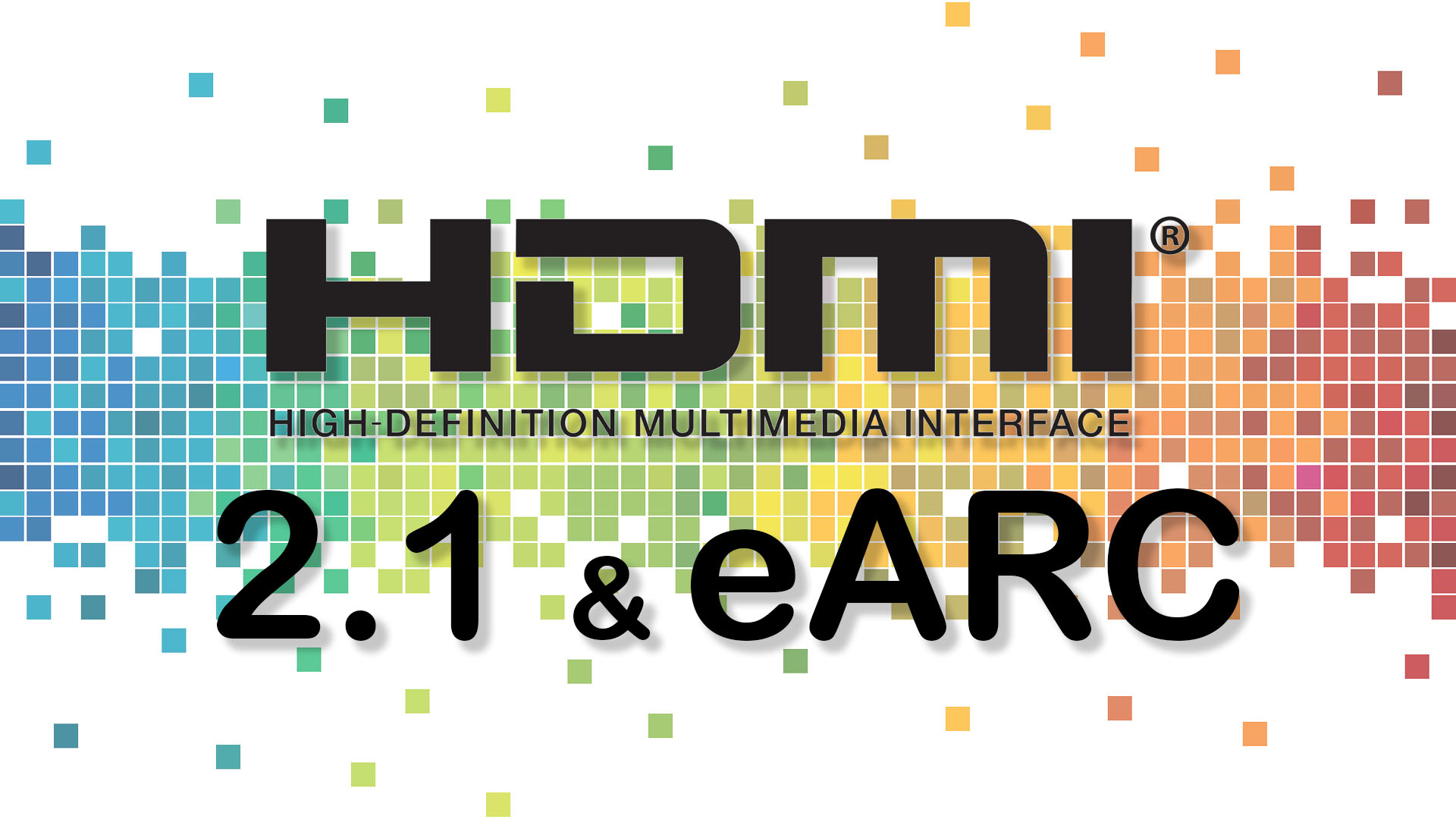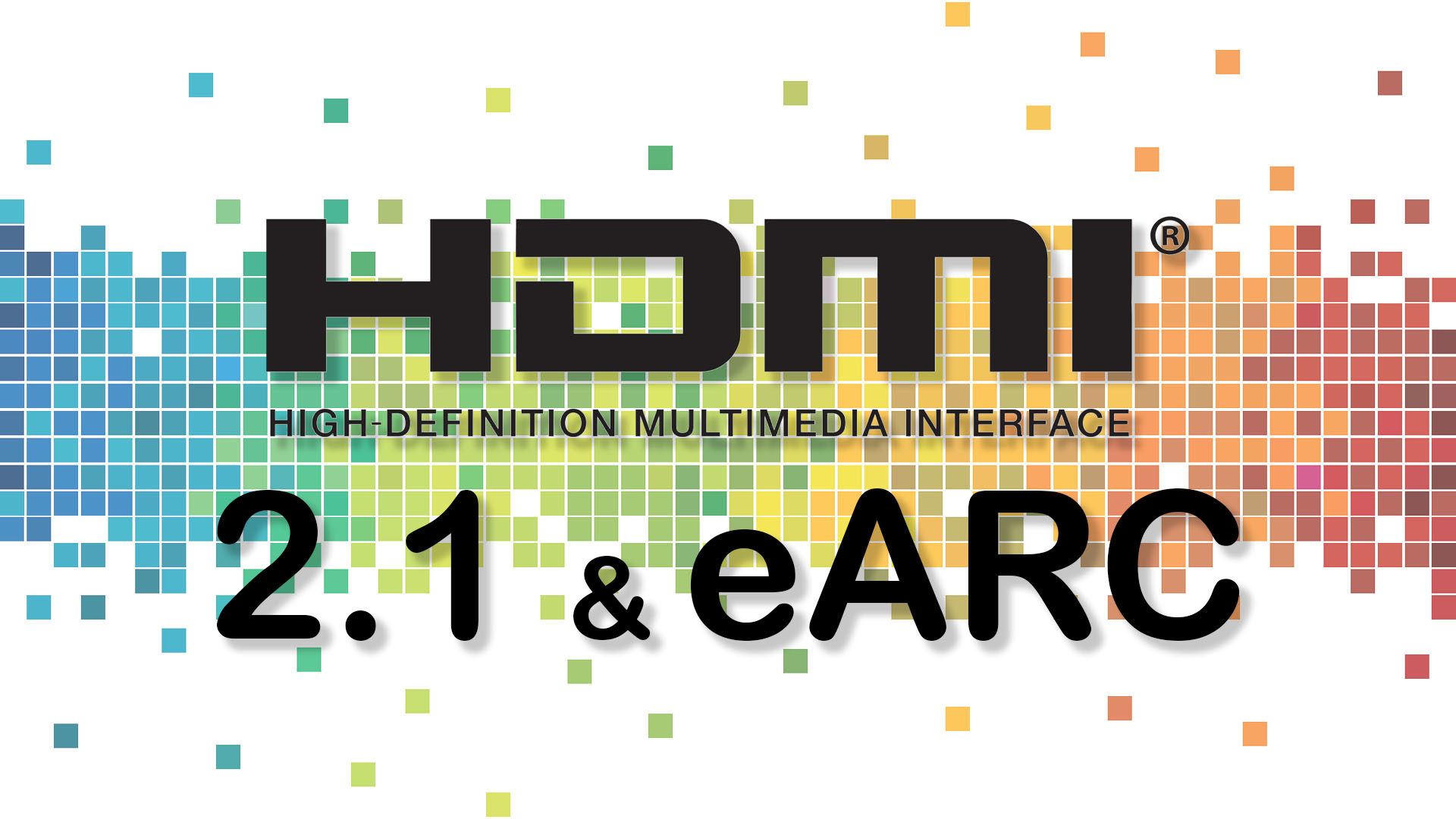

The new HDMI 2.1 standard has been around on paper for a while, but has only recently become actually available in devices. One of the innovations is the Enhanced Audio Return Channel (eARC). But which improvements does it bring and who are they for?
HDMI 2.1 was announced at the beginning of 2017, the specifications were then available from the end of 2017. However, it was not until 2020 that the first TVs and AV receivers equipped with HDMI 2.1 came onto the market. It seems, the implementation of the new standard was a real challenge for both the chip developers and the TV and electronics manufacturers.
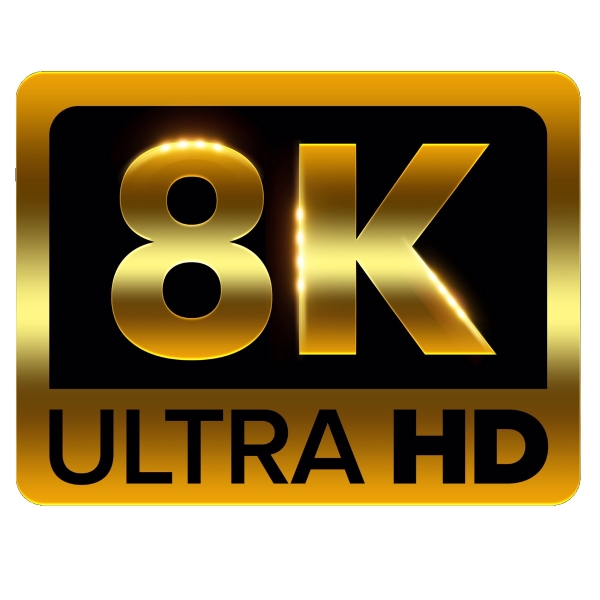
HDMI 2.1 requires technical capabilities that no one dared dreaming of just a few years ago. Resolution up to 8k (7,680 x 4,320 pixels in 16: 9) or 10k (10,240 x 4,320 pixels in 21: 9) need to be processed and transported with up to 120 frames per second. Add to this bandwidth-consuming new image standards (HDR10 +, Dolby Vision) and sound formats (Dolby Atmos, DTS: X). Overall, with these requirements, the bandwidth of HDMI 2.1 increases to 48 Gigabits, more than 2.5 times the previous specification's. It was not until the announcement of the new generation of high performance game consoles, the Playstation 5 and the Xbox Series X, that HDMI 2.1 finally found its way into home theater devices. These new consoles' technical requirements clearly exceeded the old HDMI 2.0 standard, at least in the image area.
In general, there are many details in the specification that are of particular interest to gamers, such as an automatic mode for particularly low latency (ALLM) or variable frame rates (VRR). All users should be pleased that switching from one HDMI source to another should now be possible more smoothly and without wasting time.

One of the most interesting innovations in HDMI 2.1 - at least for certain users - is the Enhanced Audio Return Channel (eARC). Like the "normal" ARC, which has been known since HDM 1.4, it is intended to transmit audio data from the television back to the AV receiver or the soundbar. This turns the HDMI cable from a digital one-way street into a dual carriageway for digital data.
In theory, you can connect additional players directly to the TV and still output the sound via the audio system if, for example, the soundbar no longer has any free HDMI inputs. However, ARC becomes much more important because practically all televisions available are now more or less "smart", i.e. equipped with Internet access and various apps. These apps usually also include offers from popular streaming providers, so that you no longer need an additional box to use Netflix, Amazon Prime Video, AppleTV or Sky Ticket.
And since these providers are also increasingly offering 4K content and high-quality multi-channel soundtracks, the Return Channel is actually the only practical way of enjoying films and series from streaming services in the best picture and sound quality.
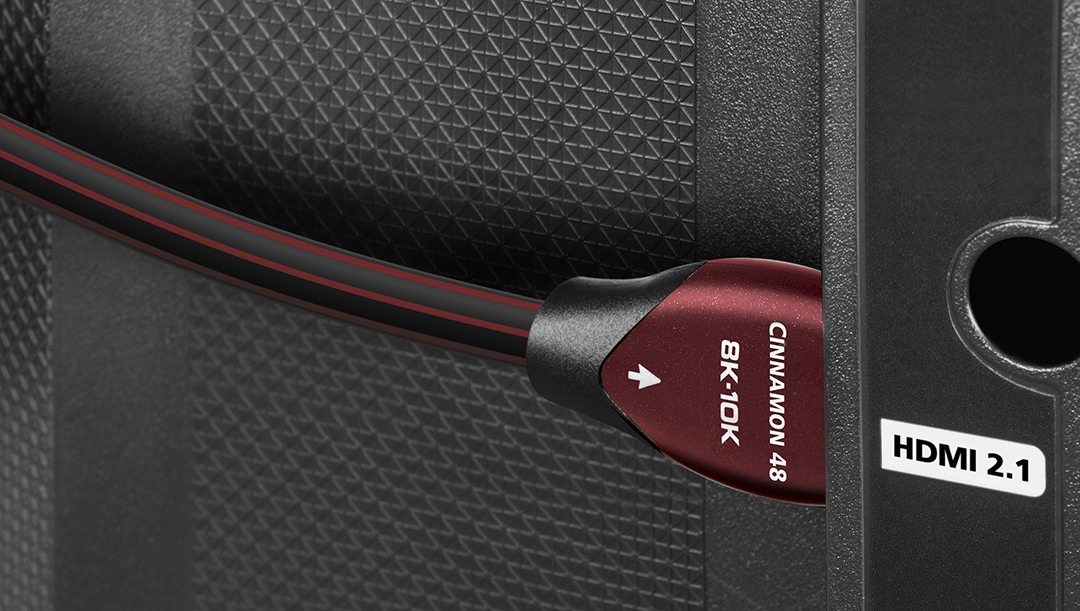
And this is exactly where the "enhanced" ARC comes into play: Thanks to the significantly expanded bandwidth, all modern sound formats up to Dolby Atmos and DTS: X and up to 32 channels of audio can now be transmitted via eARC, for example to a suitably equipped home theater receiver. Even uncompressed data streams with 24-bit / 192kHz and up to 38 Mbps should be possible.
When it was introduced, the original ARC was a well-intentioned problem solver for some special cases - no more, and no less. The new eARC introduced with HDMI 2.1 has suddenly become an almost indispensable feature when setting up a modern home theater in the living room. Oh, and by the way, eARC should now also work independently of the HDMI control protocol CEC, which has repeatedly led to problems.
Better quality, more convenience, future security in the long term - there is a lot to be said in favor of HDMI 2.1 and eARC. At the moment, the manufacturers who were the first to introduce HDMI 2.1 are still struggling with a few teething problems, but they will probably soon get a grip on them. So if you have a television and an AV receiver (or a soundbar) with HDMI 2.1 connections, the question inevitably arises whether you also need a new HDMI cable for this?
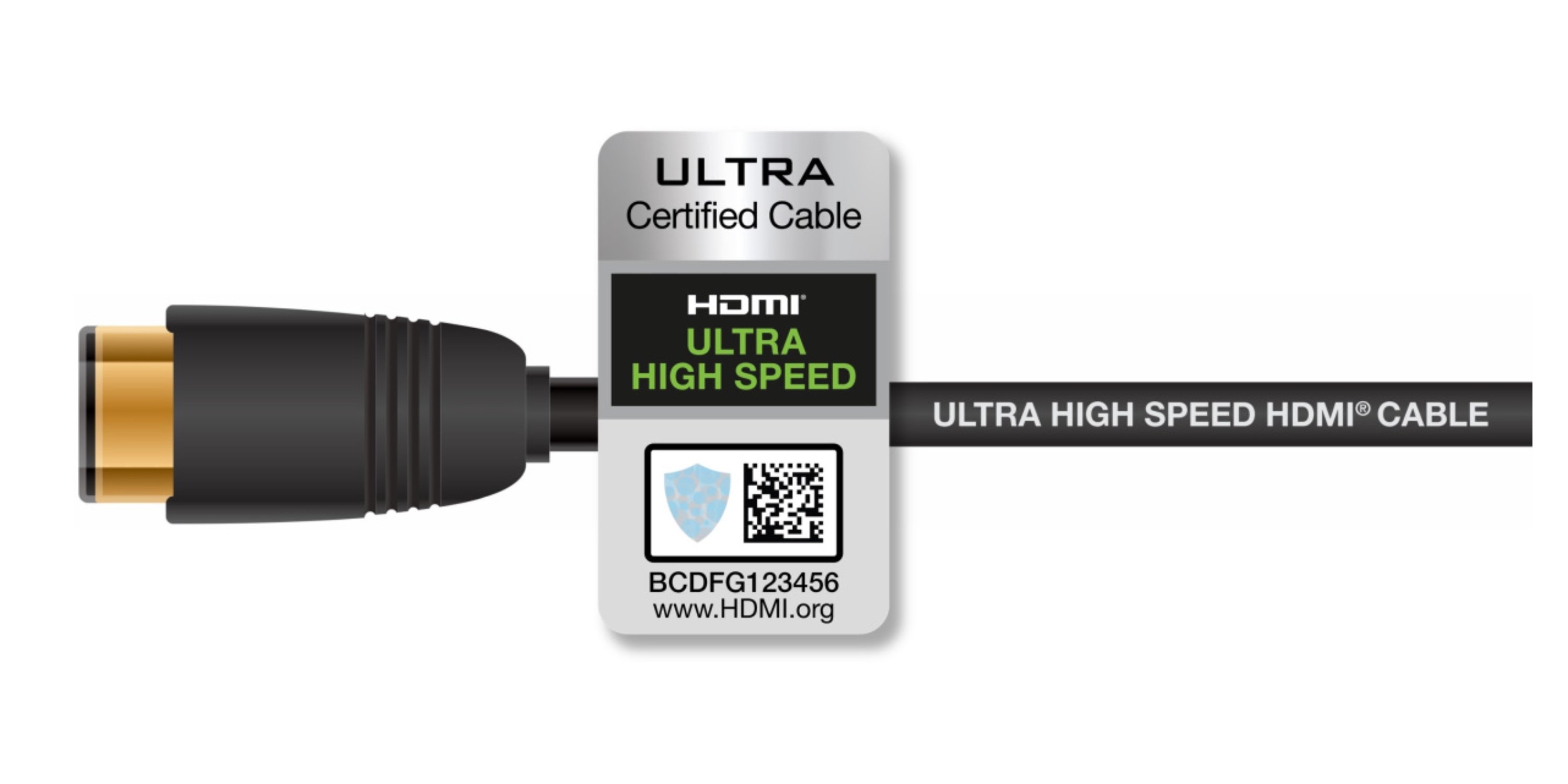
As is so often the case, the answer is a resounding "Yes, and No!". In principle, HDMI 2.1 is fully downward compatible. So if one of the connected devices or the cable does not support the new high bandwidth, everything stays the same and a connection according to HDMI 2.0 is established. For all resolutions that go beyond 4K at 60 Hz frame rate and in order to be able to use HDR10 + to the full extent, the HDMI cable used must, however, comply with the new "Ultra High Speed" certification, often called "48G" based on the required bandwidth of 48 gigabits. It is important to notice, that a failed HDMI 2.1 connection between two devices may result in all or some of the HDMI 2.1 features not working across the entire system. And that even if the failed connection is not in the active signal path.
At least in in theory, eARC should not require new cables. According to the specification, HDMI cables "High Speed with Ethernet", i.e. most of the quality cables purchased in recent years, should be sufficient. However, since it is not foreseeable at the moment how these cables will cope with the significantly higher requirements in practice, we recommend switching to a corresponding modern cable, just in case.
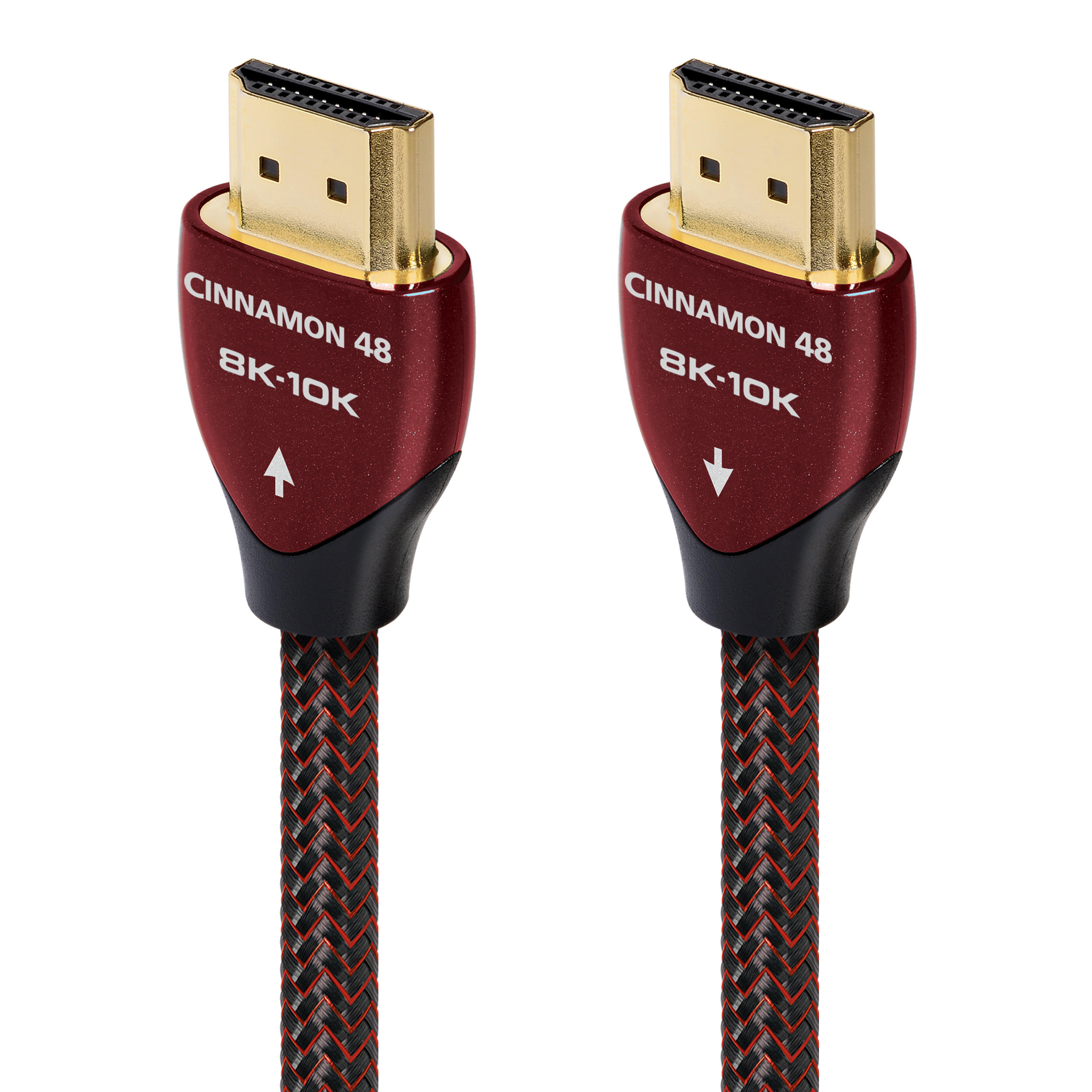
The Cinnamon 48G from Audioquest is one of the first available HDMI cables with "Ultra High Speed" certification, which performed extremely well in our malicious tests. During the development of the Cinnamon 48G, in the best Audioquest tradition, special emphasis was placed on the sound quality of the connection - also and especially when using the eARC. The cable meets the requirements of HDM 2.1 in all available lengths, so it can reliably transmit 4K or 8K video over distances of up to 5 meters.
If you have any further questions about HDMI 2.1 or eARC, just contact us.
More information about the Audioquest Cinnamon 48G can be found here.
